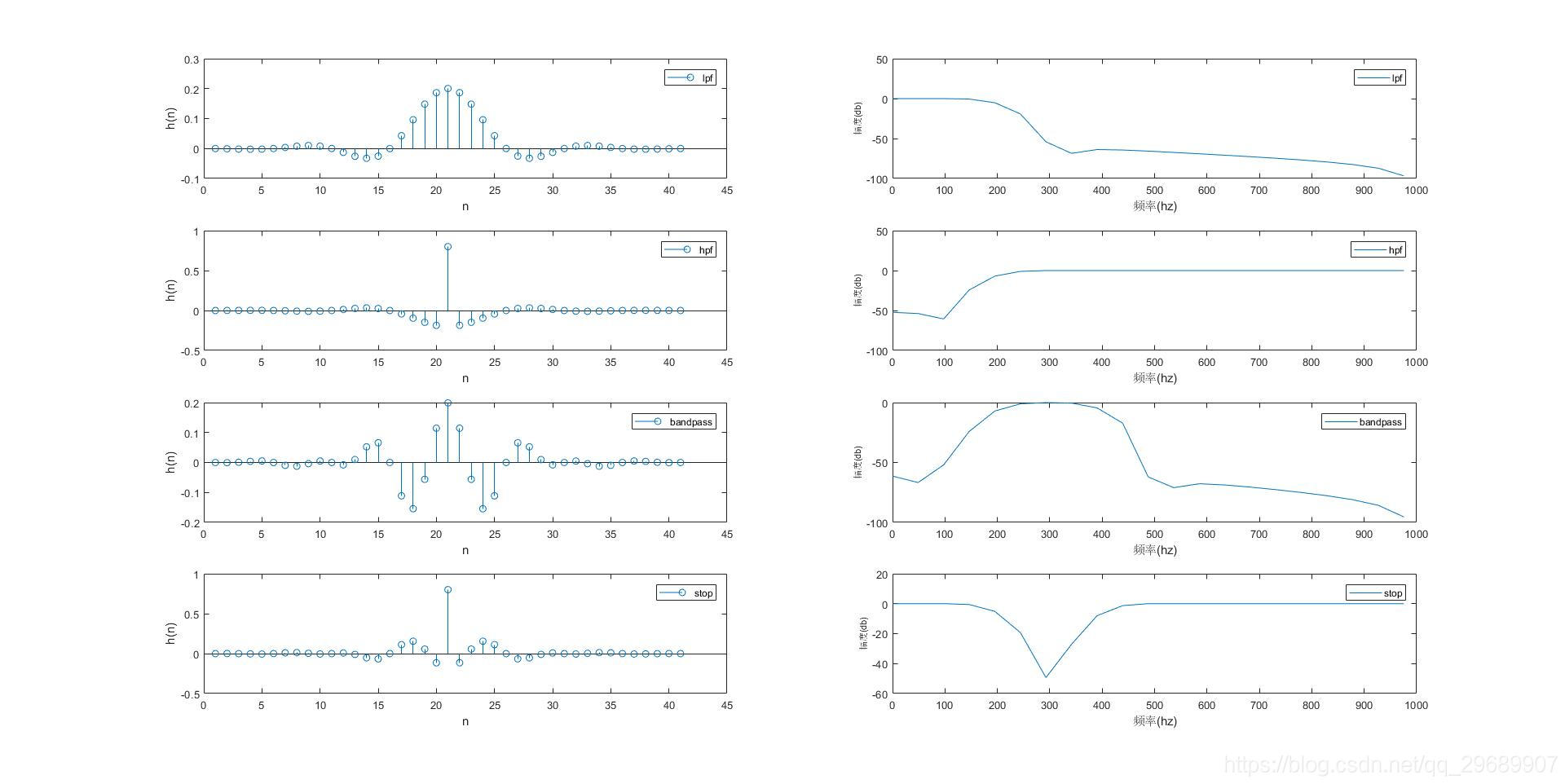matlab的FIR濾波器設計
阿新 • • 發佈:2018-12-08
1.matlab設計fir濾波器的方法
matlab可以使用fir1函式設計低通、高通、低通、帶通等具有嚴格線性相位特性的濾波器。
fir1函式的幾種語法如下:
b=fir1(n,wn);
b=fir1(n,wn,'ftype');
b=fir1(n,wn,'ftype',window)
b=fir1(...,'noscale')
各個引數的含義:
- b:返回fir濾波器的單位脈衝相應,偶對稱,長度為n+1;
- n:濾波器的階數,設計出的濾波器長度為n+1;
- wn:濾波器的截止頻率,取值範圍0<wn<1,1對應取樣頻率的1/2。當需要設計低通/高通濾波器,wn是單個值的,即截至頻率,ftype引數是low/high;;當設計帶通/帶阻濾波器時,wn由兩個陣列成的向量[wn1 wn2],ftype引數是bandpass/stop;
- window:指定使用的窗函式,預設是漢明窗(Hamming),最常用的還有漢寧窗(Hanning)、布萊克曼窗(Blackman)、凱賽窗(Kaiser);
- noscale:指定歸一化濾波器的幅度‘
2.fir1函式設計濾波器
設計濾波器,採用漢明窗,長度41(階數40),取樣頻率2000hz:
- 1.低通,截至頻率200hz;
- 2.高通,截至頻率200hz;
- 3.帶通,通帶200-400hz;
- 4.帶阻,阻帶200-400h’z
clear all; close all; clc;
% 濾波器長度
N=41;
%取樣頻率
fs=2000;
%各種濾波器的特徵頻率
fc_lpf= 模擬脈衝相應和幅頻響應圖:

